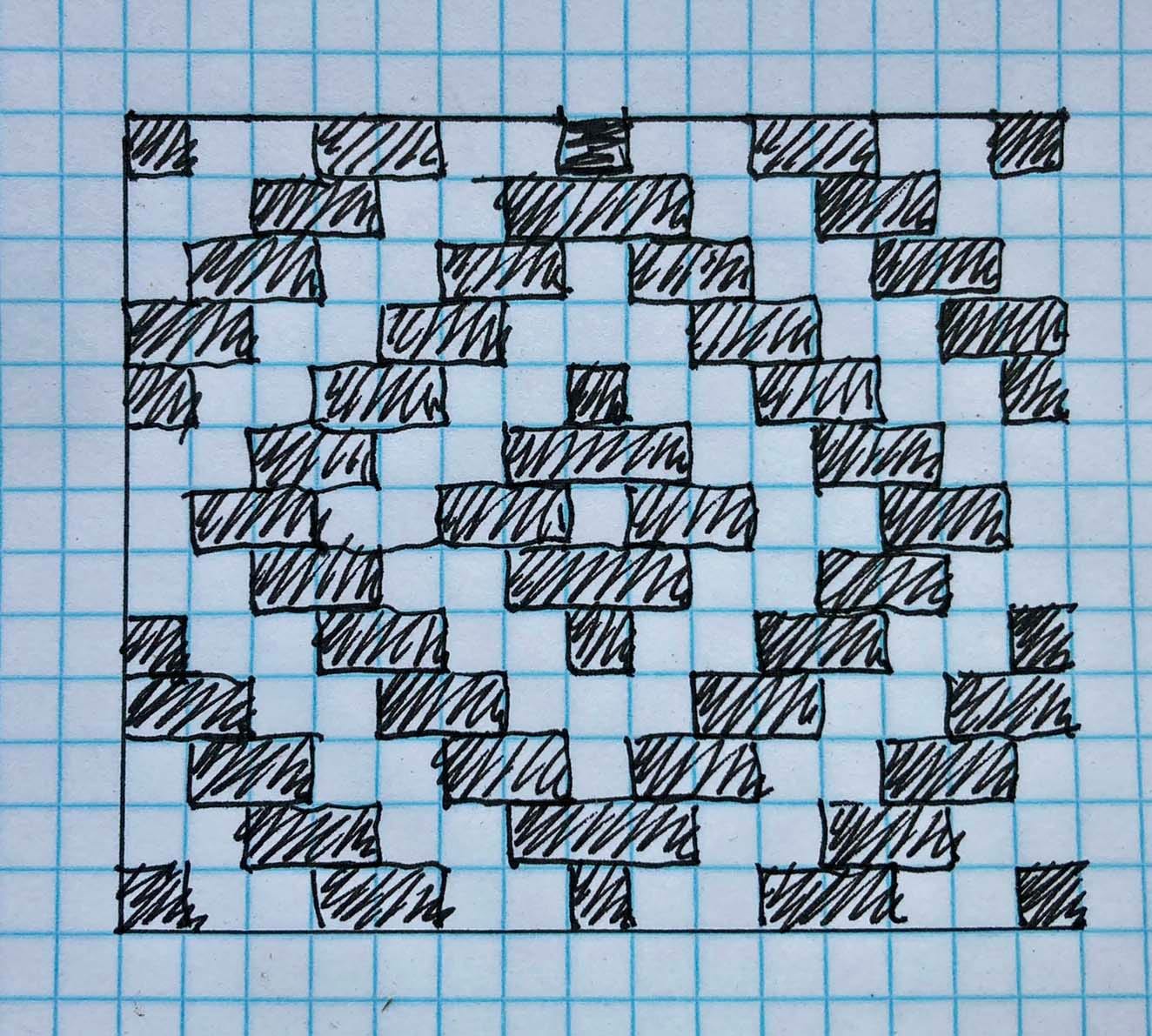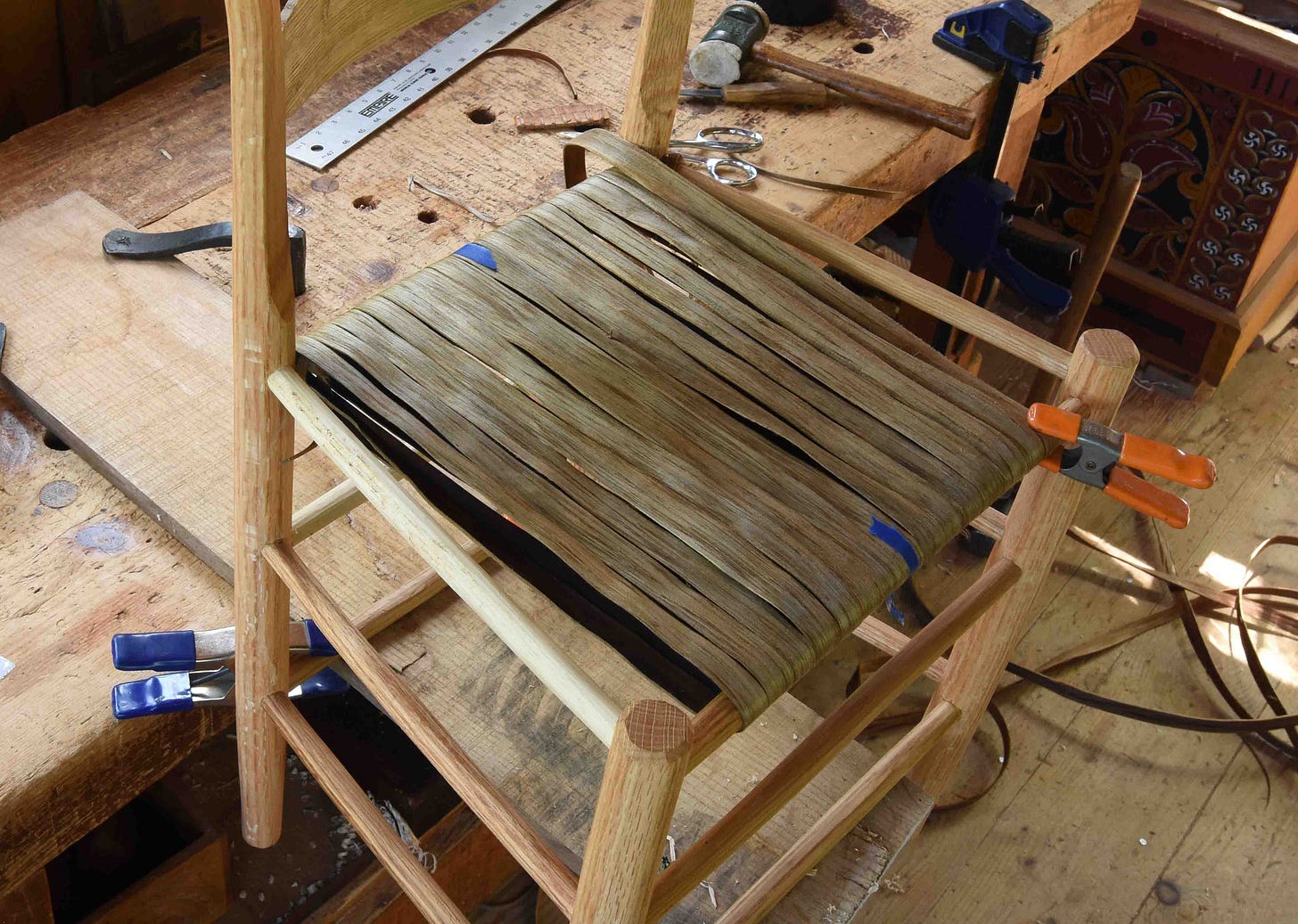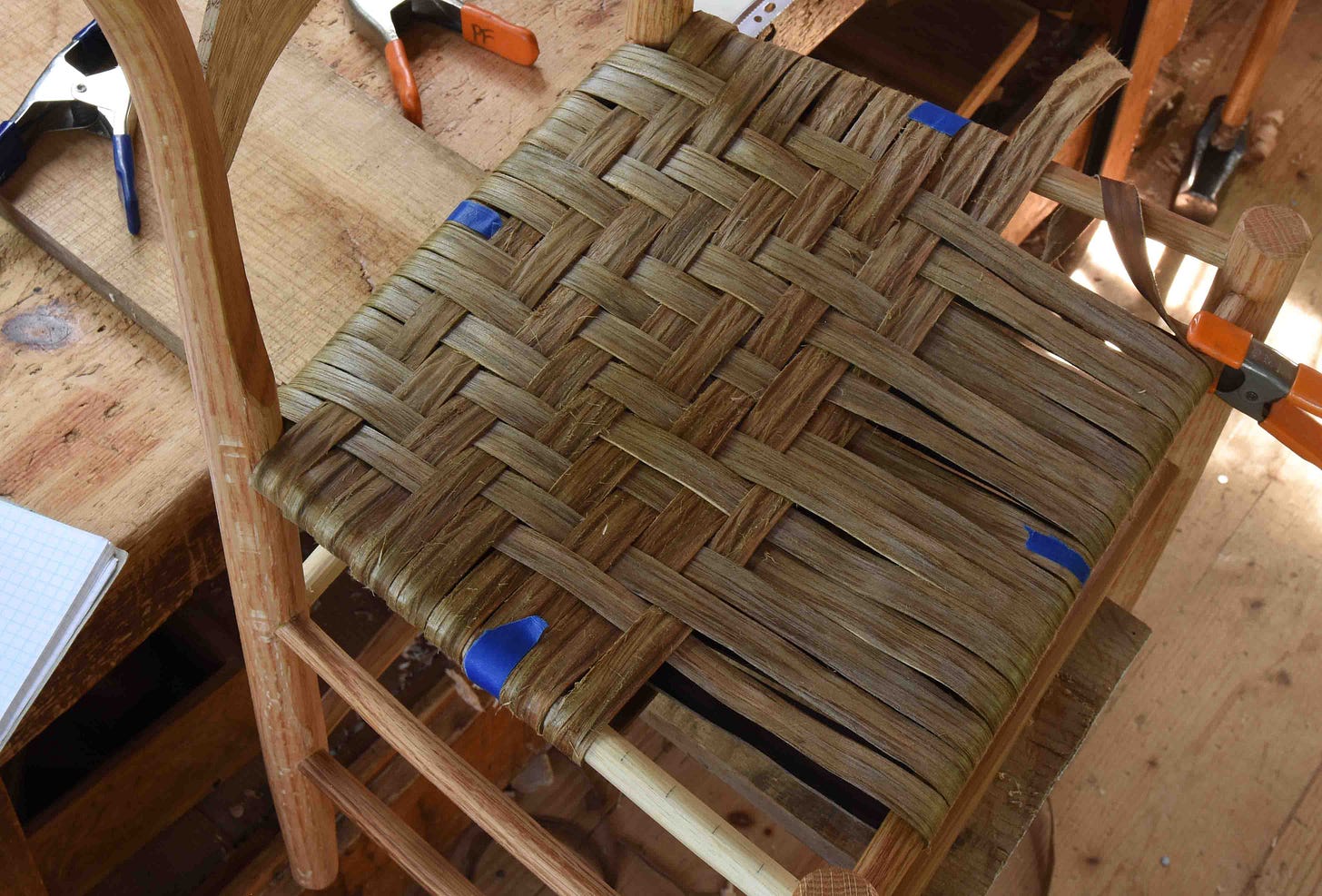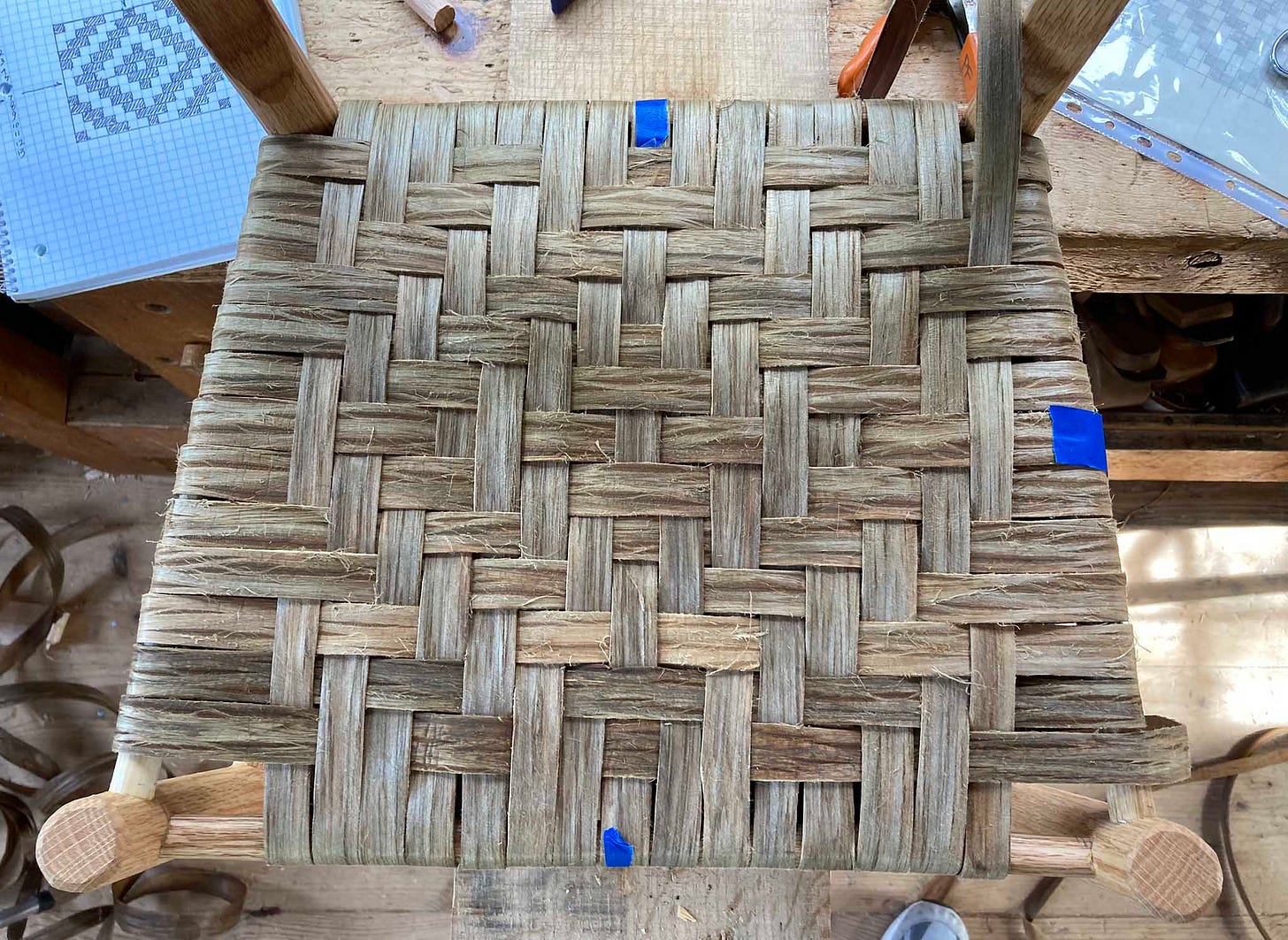[a free-to-all subscribers look at some details of weaving a diamond-pattern hickory bark seat.]
Finished assembling a JA ladderback chair today and wove a hickory bark seat on it. This time I did the diamond weave pattern. It’s like a herringbone in two mirrors. I needed to sketch out a diagram for the size seat I had. This pattern is over-two/under-two, except when it’s over/under 1 or 3. Simple.
You have to have an odd number of warp strips - the first pieces wrapped onto the chair, running front to back. The astute viewers here will note I have no such thing in the photo below. BUT - I know that the soaked hickory bark strips are going to shrink as they dry and I’ll be able to weave a new/extra piece in where that orange spring clamp is pinching a loose end in place. Once these warp strips shrink up, I’ll knock them sideways and snug them up to each other. Then finish wrapping that loose end in place. So I’ve marked what will be the center strip with blue tape so I can keep track of where I am. And where I’m going.
I had two different hickory strips to weave this pattern with. When I take it off the tree, it’s thick enough to split in half and get two strips. The outermost inner bark has a stripey pattern running along it. The inner half of the split is smoother both visually and texturally (if that’s a word.) They both work perfectly well, this pattern benefits from the distinct visual difference. Below, I’ve begun the weaving- you can see my diagram right by my side. There’s a lot to keep track of. I imagine if it was a pattern I wove all the time, I’d get to the point where it’s in my head. But I’m not there. I don’t know if I’m not there yet, or if I will ever be…we’ll see.
Once I reach what will be the center weft strip (the actual woven strips running across the seat) then the pattern reverses. So row 8 in this case is the same as row 6. And 9 will repeat 5.
In the end, I got more weft strips than I planned on, so there’ll be an extra strip running across the front. I’ll survive. It’s a funny effect - looking straight down into the seat, it’s hard to see the pattern.
But if you catch it at an angle, or in certain light, the the diamond jumps out at you.
Here’s a bit of some video showing some of the weaving, then the business of re-working the weaving after the bark dries and shrinks.
LINKS:
My video series on making the Jennie Alexander chair includes a chapter on harvesting hickory bark and one on weaving the seat
https://vimeo.com/ondemand/jachairpf
I also did a seat weaving video that’s free on youtube - search from here: https://www.youtube.com/@MrFollansbee










Way back, in the early JA ladderback courses at Country Workshops, we sent class participants home with a chair frame only, no woven seat. Basically, we ran out of time, and there wasn't a source for procuring hickory bark. We also had a collection of alternate seating materials, including Shaker tape, imitation (paper based) hickory, AND tulip poplar bark - which we knew of, but had never tried using. In 2017 one of those early chair students, Jack Ruttle, phoned me to say that his chair was in daily use, and that he had used poplar bark. Jack said that it was still looking good, with no problems. So I had to try it. Seven years later my poplar bark seat is also looking good.
Prep and technique is exactly the same as with hickory, but you have to be extra careful not to slice through the poplar when prepping the material. Also, the rungs should be smoothed with a scraper or sandpaper in areas where the bark wraps around the rungs. If you leave little flats from a spokeshave, the tiny shaved ridges will cause slight ripples on the exposed surface of the bark.
Hickory bark looks better, but tulip poplar bark is much more available in some areas. Like where we live. There's more details on how I did this in the current Lost art Press edition of my book, Country Woodcraft: Then & Now.